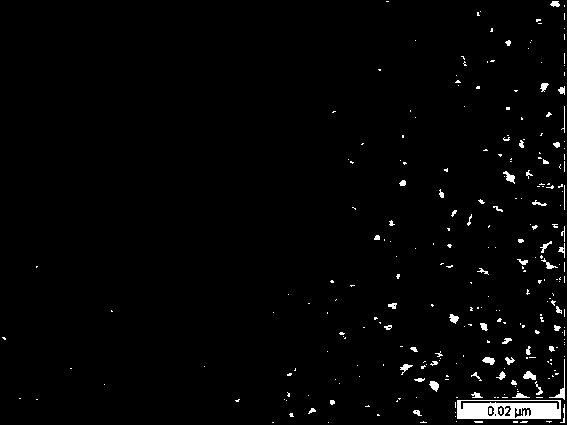Strong signal and low toxicity composite nanometer material and preparation method thereof
A nanomaterial and composite technology, applied in nanotechnology, nanotechnology, nano-optics, etc. for materials and surface science, to achieve the effect of low toxicity
- Summary
- Abstract
- Description
- Claims
- Application Information
AI Technical Summary
Problems solved by technology
Method used
Image
Examples
Embodiment 1
[0028] Embodiment 1 Preparation of a composite nanoparticle:
[0029] (1) Preparation of Au nanoparticles: Will 6*10 -3 mmol of chloroauric acid (HAuCl 4 ) was dissolved in 15ml of oleylamine (OM) and stirred for 1 hour, then 7.2*10 -3 mmol of L-vitamin C (AA) was quickly added to HAuCl dissolved in OM 4 Stirring reduction was carried out in the medium, and Au nanoparticles were prepared after 30s.
[0030] (2) Au-Cu 2 Preparation of S composite nanoparticles: First, 1 mmol of CuCl 2 Add it to 30ml of oleylamine (OM), raise the temperature to 200°C in the absence of air, then add 0.05mmol of Au nanoparticles dissolved in OM prepared in step (1) and 0.5mmol of Au nanoparticles dissolved in OM to the solution S powder, keep the temperature at 200 ° C for 2 hours and then cool to room temperature to prepare Au-Cu 2 S nanoparticles.
[0031] (3) Au-Cu 2 Preparation of S / ZnS quantum dots: ① Wash away the Au-Cu obtained in step (2) by centrifugation 2 Excess s...
Embodiment 2
[0032] Example 2 Application of a core-shell nanoparticle:
[0033] A kind of the present invention Compound Nanoparticles are used to prepare bioimaging agents for bioimaging tests. Its usage is as follows: Dissolve the composite nanoparticles with liquid chromatography pure grade water, adjust the concentration to 8mM, and prepare a biological imaging agent; take 200uL biological imaging agent and inject it intravenously, and use the composite nanoparticles to have strong fluorescence characteristics. Observing the fluorescent signal through the bioimaging system to obtain the information of the lesion.
Embodiment 3
[0034] Example 3 Application of a core-shell nanoparticle:
[0035] A kind of the present invention Compound The usage of nanoparticles for biomarking is as follows: first, the prepared composite nanoparticles are converted from the oil phase to the water phase to change the surface potential of the nanoparticles, and then the ovarian cancer gene TF2D is used to couple the prepared composite nanoparticles , drop it into the ovarian cancer cell culture medium, make the nanoparticles attach to the ovarian cancer cell surface through the ovarian cancer gene TF2D, and use the strong fluorescence and strong SERS signal characteristics of the composite nanoparticles to biomark the target cells .
PUM
 Login to View More
Login to View More Abstract
Description
Claims
Application Information
 Login to View More
Login to View More - R&D
- Intellectual Property
- Life Sciences
- Materials
- Tech Scout
- Unparalleled Data Quality
- Higher Quality Content
- 60% Fewer Hallucinations
Browse by: Latest US Patents, China's latest patents, Technical Efficacy Thesaurus, Application Domain, Technology Topic, Popular Technical Reports.
© 2025 PatSnap. All rights reserved.Legal|Privacy policy|Modern Slavery Act Transparency Statement|Sitemap|About US| Contact US: help@patsnap.com



